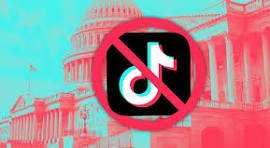Building a Brand Amidst the TikTok Ban Controversy: Strategies for Business Owners and Entrepreneurs
In the rapidly evolving landscape of social media, the TikTok ban controversy has emerged as a pivotal issue for business owners and entrepreneurs seeking to build and sustain their brands. As governments around the world grapple with concerns over data privacy, national security, and social media regulations, the potential restrictions on TikTok present both challenges and unique opportunities for brand strategists. This document aims to equip business owners with innovative strategies to navigate the complexities of brand-building amidst the TikTok controversy, focusing on maintaining user engagement, protecting user data, and adapting to shifting digital environments. By leveraging expert insights and proven marketing tactics, entrepreneurs can confidently steer their brands through this uncertain terrain, ensuring both resilience and growth in a competitive market.
Understanding TikTok and Its Popularity
Key Features of TikTok
TikTok’s success can largely be attributed to its innovative features that captivate a global audience. At its core, TikTok allows users to create short-form videos, typically lasting from 15 to 60 seconds, which can be set to music or sound bites from a vast library. This unique format encourages creativity and spontaneity. The app’s algorithm plays a crucial role in its popularity, as it personalizes content for each user based on their interactions, ensuring a highly engaging user experience. Furthermore, TikTok’s duet feature allows users to collaborate and interact with other users’ videos, fostering a communal and interactive environment. The platform’s global reach is amplified by its ease of use and accessibility, appealing to various demographics across numerous countries. These features collectively contribute to TikTok’s status as a dominant force in the social media landscape.
TikTok’s Global Reach
TikTok’s expansive global reach is a testament to its widespread appeal and strategic market penetration. With over a billion active users, TikTok has established itself as a cultural phenomenon across diverse regions, bridging cultural gaps with its universal appeal. Its user-friendly interface and localized content strategies allow it to resonate with audiences in different countries. By supporting multiple languages and promoting local trends, TikTok ensures personalized and relevant content experiences for its users. Additionally, viral challenges and trends often transcend national boundaries, fostering a sense of global community. TikTok’s success in international markets is further bolstered by strategic partnerships with local influencers and creators, who help tailor content to meet the preferences and interests of specific regions. This strategic approach not only expands TikTok’s user base but also solidifies its role as a key player in the global digital landscape.

Reasons Behind the TikTok Ban
National Security and Data Privacy
Concerns around national security and data privacy have been pivotal in the discussions about banning TikTok in various countries. Governments express apprehension over the potential for user data to be accessed by foreign entities, particularly given TikTok’s parent company, ByteDance, is based in China. The fear is that sensitive information, including location data and personal details, could be exposed, potentially compromising national security. These concerns are heightened by the possibility of state-sponsored surveillance or influence operations using the app’s vast reach. In response to these issues, some governments have proposed stringent regulations or outright bans to protect user data and national interests. This has sparked debates on the balance between security and freedom of digital expression. TikTok has taken steps to address these concerns by enhancing data security measures and transparency, but the controversy continues to prompt calls for scrutiny and regulatory oversight.

Mental Health and Addiction Concerns
The immersive nature of TikTok has led to growing concerns about its impact on mental health and potential for addiction. As users spend extended periods scrolling through endless streams of content, the risk of developing addictive behaviors increases. This excessive screen time is linked to negative mental health outcomes, such as anxiety and depression, particularly among younger users. The app’s algorithm, designed to keep users engaged by providing a constant stream of personalized content, can exacerbate these issues. Furthermore, the pressure to create and maintain a social media presence can lead to stress and negative body image. While TikTok can be a platform for creativity and connection, it is essential for users to be mindful of their consumption patterns. Discussions around these mental health concerns contribute to the broader debate on the potential need for regulatory measures to ensure the well-being of users.
Counterarguments to the Ban
Freedom of Speech and Economic Impact
Opponents of the TikTok ban often cite freedom of speech as a critical issue, arguing that restricting the platform infringes on users’ rights to express themselves. TikTok serves as a vibrant medium for creativity and communication, enabling millions of users to share their voices on a global stage. A ban could set a concerning precedent for censorship, potentially stifling diverse perspectives and artistic expression. Additionally, the economic impact of a TikTok ban cannot be overlooked. The platform is a significant driver of economic activity, particularly for content creators, small businesses, and digital marketers who rely on it for income and engagement. A ban could disrupt livelihoods, diminish opportunities for brand promotion, and have broader implications for the digital economy. These arguments highlight the need for careful consideration and balanced policies that protect both individual rights and national interests while fostering a healthy digital ecosystem.
TikTok’s Security Measures
In response to mounting concerns over data privacy and national security, TikTok has implemented several security measures aimed at safeguarding user information. The company has committed to storing user data in regional data centers to minimize risks associated with cross-border data transfers. TikTok has also enhanced its transparency efforts by opening Transparency Centers where experts can observe and assess its data practices and content moderation policies. Furthermore, TikTok has increased its investment in advanced encryption technologies to protect data from unauthorized access. The platform has introduced robust privacy settings, allowing users more control over their personal information and who can interact with their content. By taking these steps, TikTok aims to address security concerns and rebuild trust with users and regulators. While debates continue, these proactive measures underscore TikTok’s commitment to ensuring a secure environment for its global user base, potentially mitigating some arguments in favor of a ban.
Brand-Building Strategies Amidst Controversy
Leveraging Social Media Platforms
In light of the TikTok ban controversy, diversifying social media strategies has become crucial for businesses. To maintain a resilient brand presence, business owners should explore and utilize multiple platforms beyond TikTok. Instagram Reels, YouTube Shorts, and Snapchat Spotlight offer similar short-form video features that can be harnessed to engage audiences. These platforms provide opportunities for creative expression and can help maintain momentum even if TikTok encounters restrictions. Additionally, leveraging platforms like Facebook, Twitter, and LinkedIn for broader communication strategies ensures that businesses reach diverse audiences across different demographics. By understanding the unique features and audience preferences of each platform, businesses can tailor their content to maximize reach and engagement. This multi-platform approach not only mitigates the risks associated with relying on a single platform but also enhances brand visibility and resilience in a rapidly changing digital landscape.
Effective Content Creation and User Engagement
To thrive amidst the TikTok controversy, businesses must prioritize effective content creation and user engagement across their chosen platforms. Crafting compelling, authentic content that resonates with your target audience is key. Storytelling, leveraging trends, and incorporating user-generated content can enhance relatability and connection. Consistency in posting schedules and maintaining a distinct brand voice helps cultivate a loyal following. Engaging directly with users through comments, interactive polls, and live sessions fosters community and encourages participation. Additionally, data analytics can provide valuable insights into audience preferences, allowing businesses to tailor their content strategies effectively. Collaboration with influencers and creators who align with your brand values can further amplify reach and engagement. By focusing on these strategies, businesses can maintain strong connections with their audience, ensuring continued brand growth and relevance despite the challenges posed by potential platform restrictions.



